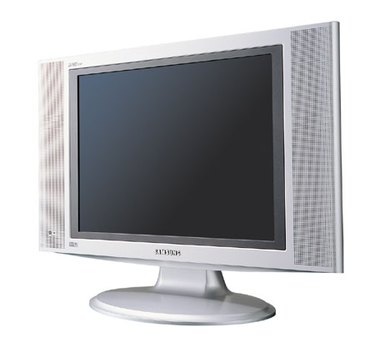
With U.S. television broadcasters slated to complete a switch to digital signals in June 2009, owners of analog televisions who rely on signals received over the air are going to be left in the cold. The digital signal is much more complicated than an analog one, which means that a TV without a digital TV tuner will be unable to view television stations over the air without some kind of external device. To not get caught off guard when this happens, you need to identify whether your TV is analog or digital.
Step 1
Consider the age of your television. Digital TVs are a recent phenomenon, with the first digital TVs being widely available to consumers in 2003. If your TV was purchased any earlier than that, it is an analog television.
Video of the Day
Step 2
Look for an "HDTV" logo on the front of your television. A digital TV will always advertise as such, so look for the "HDTV" logo on your set or in your television's documentation. All DTV sets have such a labels or markings that may contain the words "Integrated Digital Tuner," "Digital Tuner Built-In," "Digital Receiver," "Digital Tuner," "DTV" or "ATSC." If you can't find one of these logos, you have an analog television.
Step 3
If you cannot determine whether your TV set contains a digital tuner by checking the label, contact your consumer electronics retailer or the manufacturer. This information also may be available online through the manufacturer's website.
Step 4
Attempt to view digital channels. If you have digital cable or satellite service, tune into one of the digital channels your service provides. If you can hear sound but see no picture, your television doesn't know how to process the image source and therefore is analog.
Step 5
If your TV was made after March 1, 2007, it must include a digital tuner to be in compliance with a Federal Communications Commission rule prohibiting the manufacture, import, or interstate shipment of any device containing an analog tuner unless it also contains a digital tuner.
Video of the Day